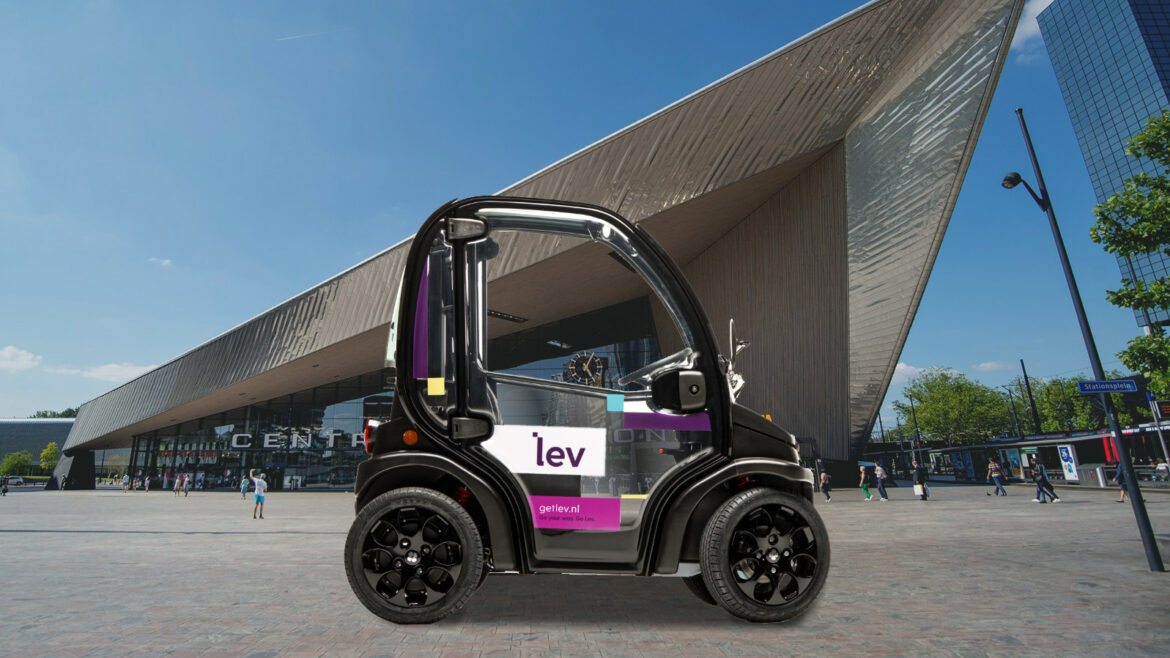Probably most students in Rotterdam are familiar with the concept of felyx. felyx is an innovative application on which users can rent e-scooters for merely 30 cents per minute. This new business model creates a convenient and especially sustainable way for users to get from A to B in a large city quickly. With felyx, the user is able to take pleasure in all perks of an e-scooter, without the difficulties of possessing one (felyx, 2019).
The increase in the use of e-scooters in the past years is noticeable. Merely 2.9% of the purchased scooters were e-scooters, in 2018 this amount grew to 9.2% (The Optimist, 2019). Governments and city councils have stimulated the use of e-scooters by offering premiums for demolishing old scooters in the past (The Optimist, 2019). Moreover, according to The Optimist (2019) in Amsterdam, there even exists an environmental zone for scooters older than build year 2010.
However, there are also questions to be raised regarding the growing use of e-scooters. Since April 8th, 2019, it is legally obligatory in Amsterdam for scooter drivers to drive on the freeway and to wear helmets (Amsterdam, 2019). The government of Amsterdam (2019) predicts that it will remain getting busier and busier on bicycle paths, which creates dangerous situations for both cyclists and scooter drivers.
Even though scooter drivers know they need to drive on the freeway or else they will be fined, most of them keep driving on the bicycle paths (van Kempen, 2019). This is because many of the scooter owners need to re-register their license plate and most importantly, they believe that it is dangerous for them to ride on the freeway. Cars on the freeway in the city are allowed to drive 50 kilometers per hour, many scooters, on the other hand, are only able to drive 25 kilometers per hour. Scooter drivers believe that this situation is dangerous as they will be driving amongst considerable faster cars which makes them very vulnerable (van Kempen, 2019).
Another issue that I believe is worth being raised is the fact that users pay per minute with this business model. Imagine that you are using a felyx and it starts raining, and you have to stop for a red traffic light. There might be users that are stimulated by felyx to drive through a red light, due to the pricing strategy. It might be a good idea for felyx to change its pricing strategy from pay-per-minute to pay-per-kilometer, thereby preventing users to drive recklessly.
A new company that may mitigate these raised issues, is the application, Lev. Lev has practically the same disruptive business model as felyx, however, they rent out small e-cars instead of e-scooters. These e-cars are able to drive 50 kilometers per hour. Furthermore, they must drive on the freeway, which ensures safer situations. Moreover, it is free to park a Lev car in the city (Getlev.nl, 2019). Another perk of Lev is the fact that you do not get wet when it is raining. Perhaps Lev should, therefore, be adopted in all major cities in the Netherlands. Nonetheless, Lev has the same pricing strategy as felyx and consequently, the issue of risky driving behaviour among its users is still stimulated due to this.
Would you make us of Lev? Do you think Lev should undertake actions regarding its pricing strategy (e.g. price per kilometer instead of price per minute) to prevent dangerous driving behaviour?
Sources
Amsterdam, G. (2019). Snorfiets naar de rijbaan. – Gemeente Amsterdam [online] Amsterdam.nl. Available at: https://www.amsterdam.nl/snorfiets-rijbaan/#h63845ba4-f67a-46f1-b462-3c164537ab0c [Accessed 6 Oct. 2019].
felyx. (2019). felyx | About us. [online] Available at: https://felyx.com/nl/en/about-us [Accessed 6 Oct. 2019].
The Optimist. (2019). De elektrische scooter verovert in stilte de stad – The Optimist. [online] Available at: https://theoptimist.nl/daily/de-elektrische-scooter-verovert-in-stilte-de-stad/ [Accessed 6 Oct. 2019].
Van Kempen, J. (2019). Scooters blijven op het fietspad rijden. [online] Parool.nl. Available at: https://www.parool.nl/amsterdam/scooters-blijven-op-het-fietspad-rijden~b093bb66/?referer=https%3A%2F%2Fwww.google.com%2F [Accessed 6 Oct. 2019].


